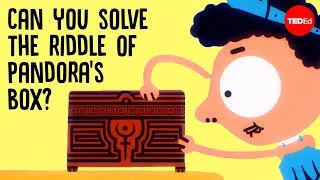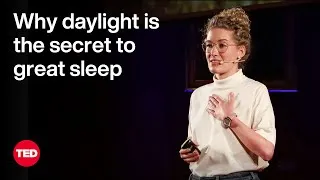How do we study the stars? - Yuan-Sen Ting
我們如何判讀星辰 - Yuan-Sen Ting
854,431 views ・ 2014-10-07
請雙擊下方英文字幕播放視頻。
譯者: Joyce Chen
審譯者: xueling Sun
00:06
The city sky is, frankly, rather boring.
0
6926
3012
說實話,城市的天空,還滿無聊的。
00:09
If you look up at the patches of
murk between buildings,
1
9938
3050
如果你抬頭看看建築物間的小塊夜空,
00:12
you might be able to pick out
The Big Dipper,
2
12988
2260
你或許能找出北斗七星,
00:15
or perhaps, Orion's Belt.
3
15248
2144
或者是獵戶座腰帶。
00:17
But hold on.
4
17392
739
不過等等,
00:18
Look at that murky patch again
and hold our your thumb.
5
18131
3288
再仔細看看那片黑夜,
伸出你的大拇指,
00:21
How many stars do you think
are behind it?
6
21419
2640
你覺得你蓋住了多少恆星?
00:24
Ten, twenty? Guess again.
7
24059
2544
十顆?二十顆?再猜一猜。
00:26
If you looked at that
thumbnail-sized patch of sky
8
26603
2702
如果你用哈勃天文望遠鏡
00:29
with the Hubble Space Telescope,
9
29305
2101
去看那片拇指大小的天空,
00:31
instead of points of light,
you'd see smudges.
10
31406
2912
你不會看到許多小亮點,
而是看到一團團光暈。
00:34
These aren't stars.
11
34318
1555
而這些光暈不是恆星,
00:35
They're galaxies, just like our Milky Way.
12
35873
2984
它們是星系,就像我們的銀河系一樣,
00:38
Cities of billions of stars,
13
38857
2262
每個都是好幾十億恆星的群落,
00:41
and more than 1,000 of them
are hidden behind your thumb.
14
41119
5353
在你大拇指底下,就有超過一千個星系。
00:46
The universe is bigger than
you can see from the city,
15
46472
3120
宇宙的規模比你從城市裡所見的還要巨大,
00:49
and even bigger than the starry sky
you can see from the countryside.
16
49592
4349
甚至比你從鄉間所望見的星空還要浩瀚。
00:53
This is the universe as
astrophysicists see it,
17
53941
3835
這就是天文物理學家眼中的宇宙,
00:57
with more stars than all the grains
of sand on Earth.
18
57776
5685
裡面的恆星比地球上的沙粒還要多。
01:03
By staring up at the stars at night,
19
63461
1936
每當你在夜晚仰望星空時,
01:05
you've taken part in the oldest science
in human history.
20
65397
3411
你實際上是在參與人類史上最古老的科學活動。
01:08
The study of the heavens is older than
21
68808
1941
天文研究在人類史上
01:10
navigation, agriculture, perhaps
even language itself.
22
70749
4094
比航海、農業、可能比語言的存在還要古老。
01:14
Yet unlike other sciences,
astronomy is purely observational.
23
74843
4656
但不像其他科學,天文學的基礎完全只憑觀測。
01:19
We cannot control the parameters
of our experiments from lab benches.
24
79499
3665
我們無法在實驗室控制任何變因或參數。
01:23
Our best technology can send
man to the moon,
25
83164
2986
用最尖端的科技,我們可以送人類上月球
01:26
and probes to the edge of
the solar system.
26
86150
2999
並探勘太陽系的邊界,
01:29
But these distances are vanishingly small
27
89149
2359
但比起星辰間的無垠地帶,
01:31
compared to the yawning gulfs
between stars.
28
91508
3303
人類所能探觸的距離簡直微不足道。
01:34
So how can we know so much
about other galaxies,
29
94811
2453
所以我們怎麼獲得大量其他星系的知識呢?
01:37
what they're made of, how many there are,
or that they're even there at all?
30
97264
4607
我們怎麼知道它們的成分、數量,
甚至確定它們存在?
01:41
Well, we can start with the first thing we
see when we look up at night: the stars.
31
101871
4053
好吧,我們可以先從仰望天空
最先看到的東西開始:星星。
01:45
What we are trying to learn
is their properties.
32
105924
3237
我們試著了解它們的特質。
01:49
What are they made of? How hot are they?
How massive? How old?
33
109161
4343
它們的成分是甚麼?溫度多高?
規模多大?存在了多久?
01:53
How far are they from Earth?
34
113504
2378
它們離地球的距離有多遠?
01:55
And believe it or not,
35
115882
1262
信不信由你,
01:57
we can learn all of these things
simply from the light shining in the sky.
36
117144
5081
這些答案都可以從星星發出的光芒推算出來。
02:02
We can decipher one kind of stellar message
by turning starlight into rainbows.
37
122225
4889
我們將這些星光轉換為彩虹光譜,
就可以破解這些星辰背後的秘密。
02:07
When you look at a rainbow on Earth,
38
127114
1745
當你在地球上看到彩虹的時候,
02:08
you're really looking at light
from our Sun
39
128859
2149
其實你看到的是太陽所發出的光,
02:11
being scattered through water droplets
in the atmosphere
40
131008
3301
被大氣層的水珠折射後所散發的光譜,
02:14
into all the different wavelengths
that make it up.
41
134309
3211
水珠將光線分散成不同的波長,形成彩虹。
02:17
And we study the light from other stars,
42
137520
2133
所以當我們分析其他星球的光芒時,
02:19
we can create rainbows on demand
using not water droplets,
43
139653
4032
我們可以自己將它變成彩虹,但不是用水珠,
02:23
but other specific instruments that
disperse light.
44
143685
3818
是用其他分散光譜的儀器。
02:27
When we look at the scattered
light from our sun,
45
147503
2502
當我們仔細觀察太陽光的彩虹光譜時,
02:30
we see something strange:
dark lines in our rainbow.
46
150005
3461
有個奇怪的現象:彩虹光裡有一些黑線。
02:33
These lines are the characteristic
fingerprints of atoms.
47
153466
3624
這些黑線就像指紋一樣,是原子的特有的波紋。
02:37
Each type of atom in the solar atmosphere
soaks up light at specific wavelengths,
48
157090
4997
在大氣層中,
每一種原子只會吸收某段特定波長的光,
02:42
and the amount of absorption depends on
how many of these atoms there are.
49
162087
4489
這些波長的光被吸收的量,
取決於該原子數量的多寡。
02:46
So by observing how much light is missing
at these characteristic wavelengths,
50
166576
4022
所以如果我們觀察在這個特定波長裡,
有多少光不見了,
02:50
we can tell not only what elements are
in the Sun's atmosphere,
51
170598
3314
我們不只可以推斷出
太陽系大氣層裡有哪些元素,
02:53
but even their concentrations.
52
173912
2708
甚至還可以推算出元素所占的比例。
02:56
And the same idea can be applied to
study other stars.
53
176620
3149
同樣的方法也可運用於其他恆星:
02:59
Make a spectral rainbow,
see what's missing,
54
179769
2507
將恆星的彩虹光譜分析出來,
看看裡面缺少那些波段,
03:02
and figure out which elements are present.
55
182276
2443
就可推算出有那些元素的存在。
03:04
Bingo. Now you know what stars
are made of.
56
184719
3635
太好了,現在你知道恆星的成分了。
03:08
But we aren't restricted to just
the wavelengths that our eyes perceive.
57
188354
3645
儘管我們眼睛的可見光有限,
我們並不會被此限制,
03:11
Consider radio waves.
58
191999
2052
試想,還有無線電波呢。
03:14
Yes, they can bring the Billboard Top 100
to your car,
59
194051
3072
是的,無線電波可以讓你
在車上聽廣播金曲排行榜,
03:17
but they can also travel almost
unimpeded through space.
60
197123
4191
但這種波也可以在太空中自由傳遞,
03:21
Because they've come so far,
61
201314
1514
而因為它們是從太空中非常遠的地方傳來,
03:22
radio waves can tell us the very
early history of the universe,
62
202828
3659
無線電波可以告訴我們宇宙非常早期的歷史,
03:26
from just a few thousand years
after The Big Bang.
63
206487
3970
甚至可以追朔到
宇宙大爆炸後僅幾千年的時間。
03:30
We can also study the infrared light,
emitted by colder objects,
64
210457
3864
我們也可以研究其他比較冷的物體
所發出來的遠紅外線,
03:34
like the gas and dust clouds in space,
65
214321
2720
像是太空中的氣體和塵雲,
03:37
and the ultraviolet light from the hot
stars recently born from those clouds.
66
217041
5158
也可以觀察剛誕生的、
比較熱的恆星所發出來的紫外線光。
03:42
Studying different wavelengths
not only gives us
67
222199
2672
研究不同的波長,不但可以讓我們
03:44
a more complete picture
of any single object
68
224871
2374
對一個物體有更全面的了解,
03:47
but also different views of the universe.
69
227245
2697
也可以讓我們對宇宙有不同的認識。
03:49
For this reason, astrophysicists use
several different kinds of telescopes
70
229942
4348
因此,天文物理學家運用了幾種不同的望遠鏡,
03:54
covering the spectrum from the infrared
to the ultraviolet to the X-ray,
71
234290
4621
好讓他們可以完整觀察各種光線,
包含遠紅外線、紫外線和X光射線,
03:58
from giant radio dishes to giant
silver mirrors to space satellites,
72
238911
4230
接收的媒介包含巨型的無線電接收器、
反射鏡和人造衛星,
04:03
detecting light that would be otherwise
blocked by the Earth's atmosphere.
73
243141
4877
這些可以偵測到
原本地球大氣層收不到的東西。
04:08
Astrophysicists don't just see
74
248018
1955
天文物理學家不只可以看見
04:09
the billions of stars among
the billions of galaxies in the universe.
75
249973
3412
宇宙中好幾十億的星系中好幾十億的恆星,
04:13
They hear, feel and sense them
through many channels,
76
253385
3838
他們也可以透過各種媒介聽見、
觸及、感覺到這些星球的存在。
04:17
each revealing a different story.
77
257223
2164
每一個恆星都訴說著不同的故事。
04:19
But it all begins with light,
the kind we can see and the kind we can't.
78
259387
4668
但這一切都是從光開始的,
有些光我們看得見,有些我們看不見。
04:24
Want to know the secrets of the Universe?
79
264055
2642
想知道宇宙的祕密嗎?
04:26
Just follow the light.
80
266697
1617
就追隨光吧。
New videos
關於本網站
本網站將向您介紹對學習英語有用的 YouTube 視頻。 您將看到來自世界各地的一流教師教授的英語課程。 雙擊每個視頻頁面上顯示的英文字幕,從那裡播放視頻。 字幕與視頻播放同步滾動。 如果您有任何意見或要求,請使用此聯繫表與我們聯繫。







